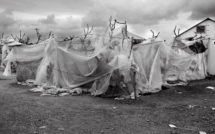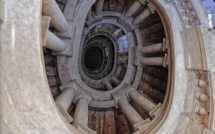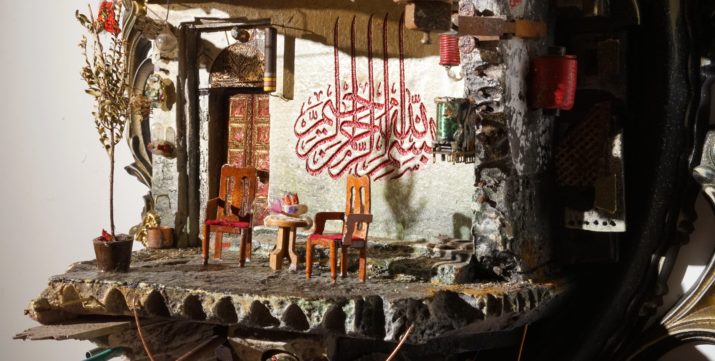
This is part of our special feature on Forced Migration, Displacement, and the Liberal Arts.
Mohamad Hafez is a Syrian born artist residing in New Haven, CT who combines found objects, paint, and scrap metal to respond to the atrocities of the Syrian war. Hafez’s work depicts cities besieged by civil war to capture the magnitude of the devastation and to expose the fragility of human life. However, in deliberate contrast to the violence of war, his art imbues a subtle hopefulness through its deliberate incorporation of verses from the Holy Qur’an.
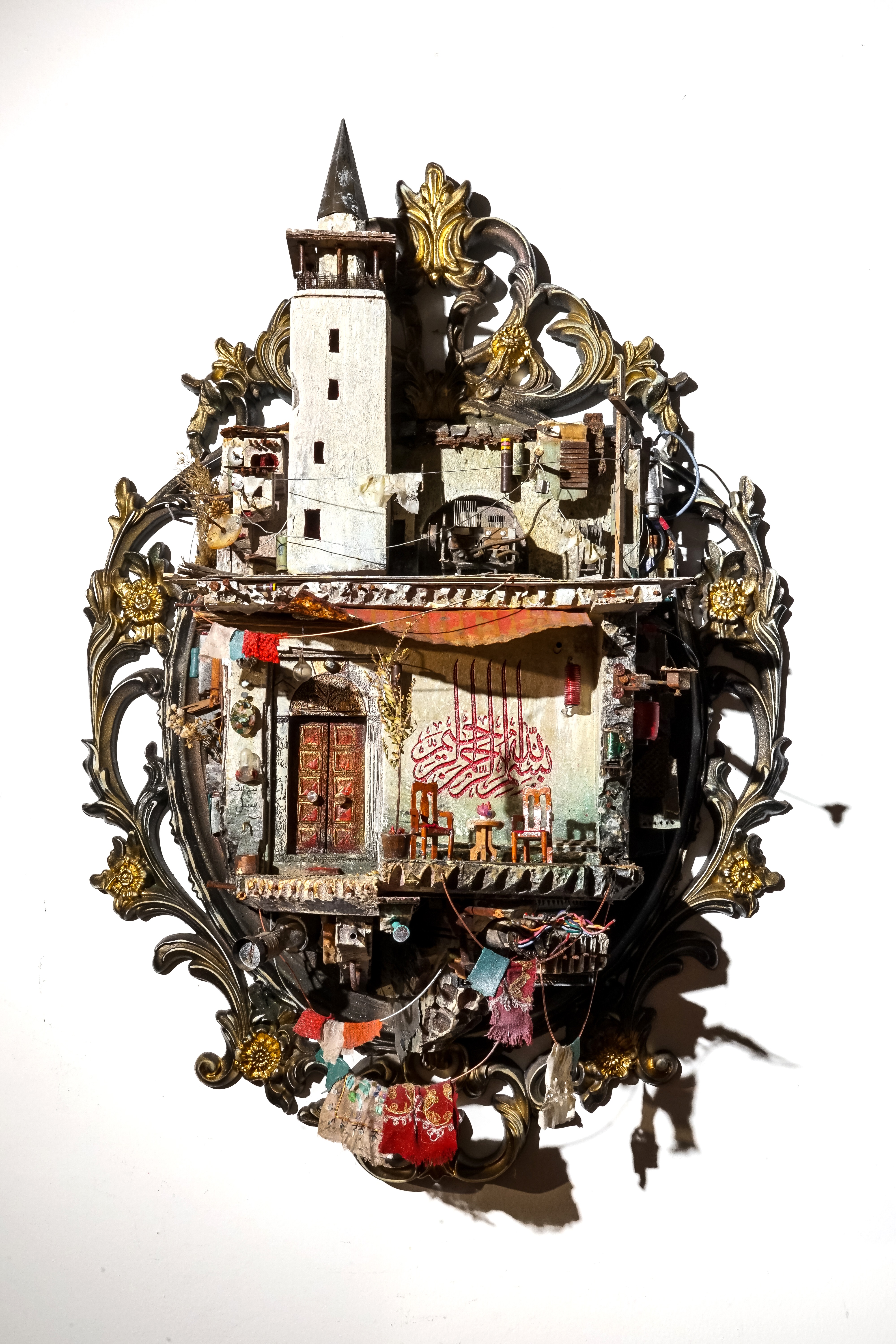
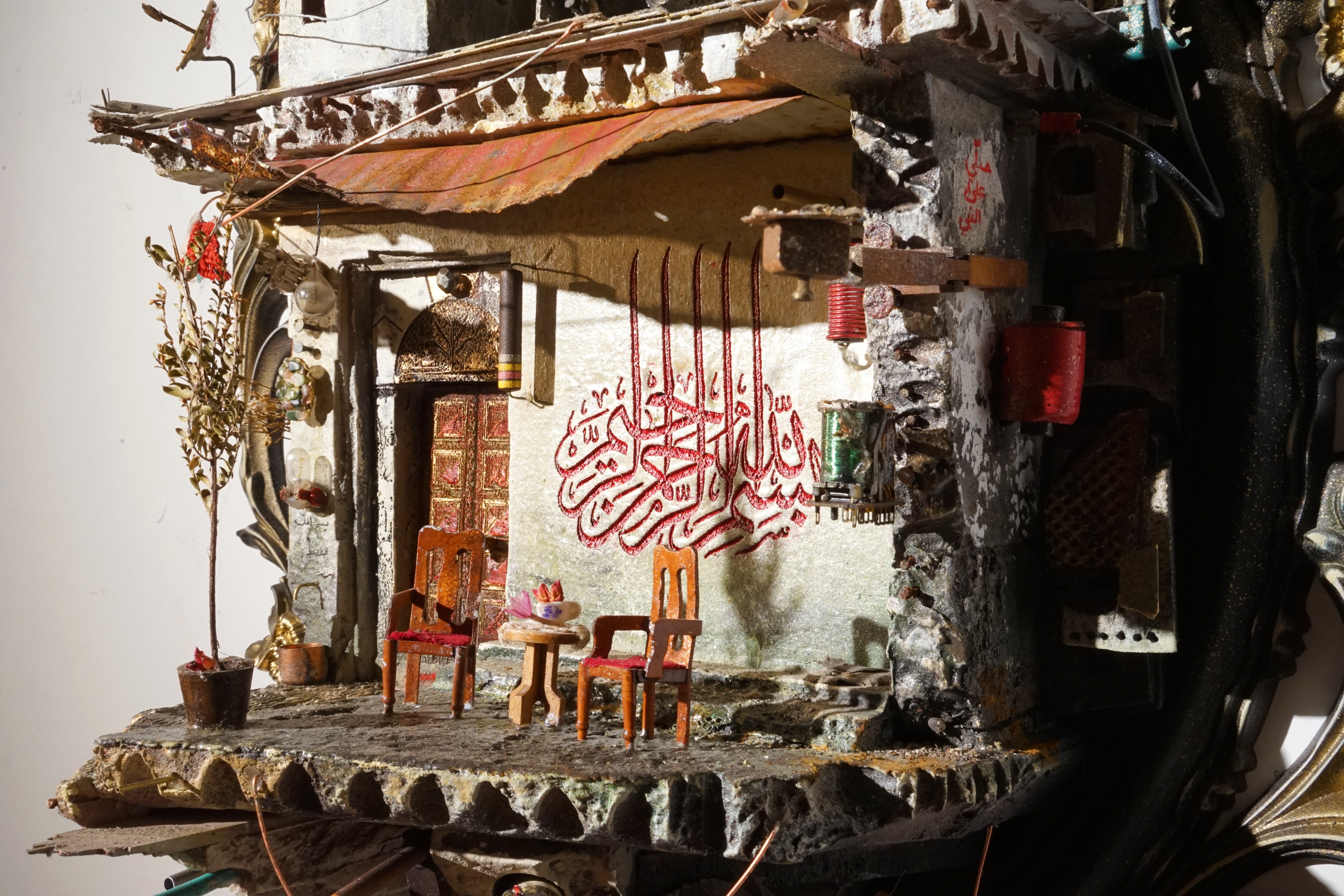



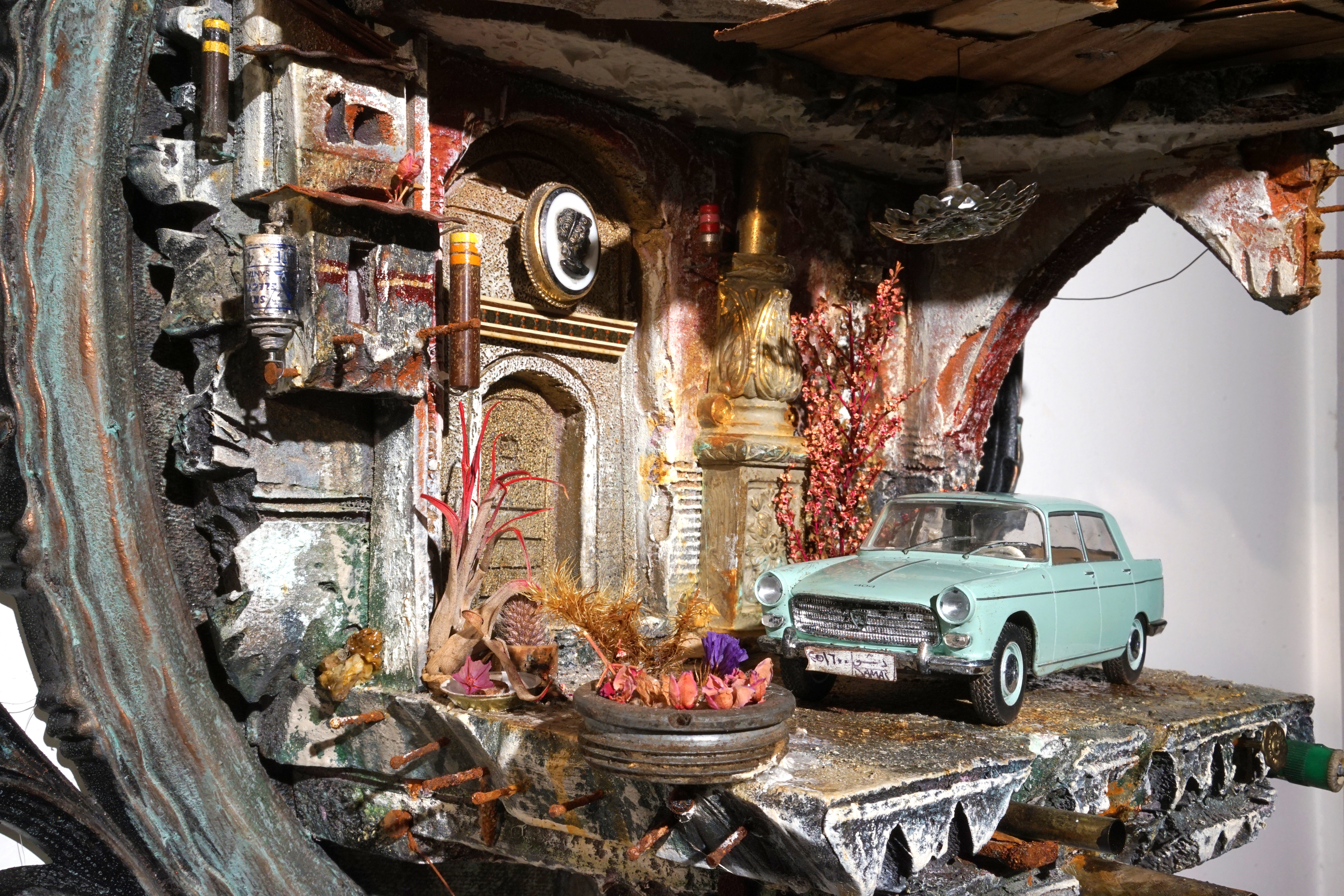


Damascene Athan Series
This series emerges from recordings Mohamad Hafez made during his last visit to Damascus in 2011, on the eve of the Syrian War. He integrated those final few moments of peace into the decorative mirror frames which remind him of the plush Victorian interiors he had to leave behind. The daily calls to prayer from the Great Umayyad Mosque of Damascus can be heard in the background, and Islamic calligraphic graffiti decorates the walls. In 2011, although life seemed very peaceful at the time, Hafez says one could not help but feel a greater danger looming over Damascus, fueled by the Arab Spring momentum and the demonstrations that had already started in southern Syria. The heavy presence of security forces and “police” trucks signaled to him, a larger preparation for what was to come next. The Toyota truck included in the work is a vehicle notoriously used by Syrian secret service. Having this vehicle parked outside anyone’s house meant bad news. While flowers and jasmine ivy continued to peacefully grow on the architecture, so did fear and stress depicted in surveillance cameras. The contrast between what he recorded and what he witnessed reveals the complexity of what one experiences at the cusp of a vicious war in their homeland. Stuck in nostalgia, and healing from war atrocities, Syrians across the globe struggle to comprehend all that had happened. When they look in a mirror, they no longer see themselves… they see all of that emotional baggage present.





Facades
In these early experiments with wall murals in cast plaster, Hafez emphasizes stalled points of entry and exit. Closed doorways and barred windows are framed through a square or rectangular format. In architectural practice, model making (the construction of miniature, to-scale replicas of planned buildings) implicitly announces the promise of the new. Instead the fragmented buildings and homes of Facades imply the passage of time, reflecting a need or desire not to be seen. Are those within truly protected by blocking any view into the “interior” of these facades? Here, Hafez highlights how perceptions of Syrian conflict are negotiated through sight — both what cannot be seen, what atrocities happen behind the state’s closed doors, and the selective nature of what suffering and violence is made visible in the global circulation of images.
Published on March 5, 2019.

